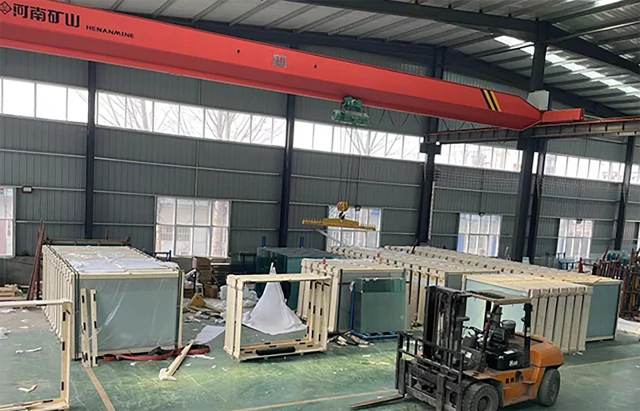The Art and Science of Acid Glass Design
In the realm of decorative arts, acid glass design represents a unique fusion of creativity, craftsmanship, and chemistry. This captivating technique has a rich history, having evolved over centuries, and it continues to inspire both artists and collectors today.
Understanding Acid Glass
Acid glass refers to glass that has been treated with acid to create intricate designs and patterns. This process typically involves the use of hydrofluoric acid, which etches the glass surface, resulting in frosted effects that can be used to highlight motifs and images. The versatility of acid glass makes it suitable for an array of applications, from decorative items and tableware to architectural elements.
The etching process begins with glass pieces that are often clear or colored. Artists typically cover specific areas of the glass with a protective coating, leaving certain parts exposed to the acid. By controlling the duration of exposure, they can create varying depths and textures in the glass surface. This meticulous process allows for an incredible range of designs, from simple geometric shapes to elaborate, flowing motifs inspired by nature.
Historical Context
The roots of acid glass design can be traced back to the late 19th century, particularly in the United States and Europe. It emerged as part of the broader Art Nouveau movement, which celebrated organic forms and natural beauty. One of the most notable manufacturers of acid-etched glass during this period was the renowned American firm, Tiffany Studios, founded by Louis Comfort Tiffany. Tiffany's innovative techniques elevated acid glass to new heights, incorporating it into lamps, vases, and other decorative objects, which showcased the ethereal quality of frosted surfaces.
The art of acid glass continued to flourish through the early 20th century, with various designers and craftsmen experimenting with techniques and styles. Art Deco, which emphasized geometry and streamline design, found a place for acid-etched glass in its aesthetic. This period saw an explosion of creativity, resulting in pieces that combined both elegance and modernity.
acid glass design
Contemporary Applications
Today, acid glass design remains relevant, with contemporary artists and designers incorporating it into their work
. The process has been adapted and refined, allowing for new technologies and styles to emerge. Modern acid-etched glass is often used in architectural applications such as railings, partitions, and windows, allowing architects to create unique environments with natural light diffused through beautifully textured glass.
In the world of interior design, acid glass has found its niche in creating focal points within spaces. Decorative glass panels can serve as dividers in open-plan interiors, providing both privacy and artistic flair. Designers often collaborate with artists to create customized pieces that reflect the character and ethos of a particular space.
Craftsmanship and Sustainability
The craftsmanship involved in acid glass design cannot be overstated. It requires a deep understanding of materials, an eye for design, and meticulous attention to detail. Many artisans embrace sustainable practices by sourcing materials responsibly, using environmentally-friendly processes, and creating timeless pieces that are meant to last.
In an age where mass production often overshadows craftsmanship, acid glass designers represent a commitment to quality and artistry. Each piece of acid-etched glass is unique, carrying with it the imprint of the artist's hand and vision. This singularity is highly valued in today's market, where consumers are increasingly seeking one-of-a-kind items that tell a story.
Conclusion
Acid glass design is more than just a decorative technique; it embodies the intersection of art, science, and history. As both a medium and an art form, it continues to evolve, driven by the creativity of artists and the demands of contemporary design. Whether through the nostalgia of its historical roots or the fresh perspectives of modern artisans, acid glass remains a compelling testament to the beauty and versatility of this enduring craft. Its ability to transform spaces while celebrating intricate artistry ensures that acid glass design will continue to captivate audiences for generations to come.
 Afrikaans
Afrikaans  Albanian
Albanian  Amharic
Amharic  Arabic
Arabic  Armenian
Armenian  Azerbaijani
Azerbaijani  Basque
Basque  Belarusian
Belarusian  Bengali
Bengali  Bosnian
Bosnian  Bulgarian
Bulgarian  Catalan
Catalan  Cebuano
Cebuano  Corsican
Corsican  Croatian
Croatian  Czech
Czech  Danish
Danish  Dutch
Dutch  English
English  Esperanto
Esperanto  Estonian
Estonian  Finnish
Finnish  French
French  Frisian
Frisian  Galician
Galician  Georgian
Georgian  German
German  Greek
Greek  Gujarati
Gujarati  Haitian Creole
Haitian Creole  hausa
hausa  hawaiian
hawaiian  Hebrew
Hebrew  Hindi
Hindi  Miao
Miao  Hungarian
Hungarian  Icelandic
Icelandic  igbo
igbo  Indonesian
Indonesian  irish
irish  Italian
Italian  Japanese
Japanese  Javanese
Javanese  Kannada
Kannada  kazakh
kazakh  Khmer
Khmer  Rwandese
Rwandese  Korean
Korean  Kurdish
Kurdish  Kyrgyz
Kyrgyz  Lao
Lao  Latin
Latin  Latvian
Latvian  Lithuanian
Lithuanian  Luxembourgish
Luxembourgish  Macedonian
Macedonian  Malgashi
Malgashi  Malay
Malay  Malayalam
Malayalam  Maltese
Maltese  Maori
Maori  Marathi
Marathi  Mongolian
Mongolian  Myanmar
Myanmar  Nepali
Nepali  Norwegian
Norwegian  Norwegian
Norwegian  Occitan
Occitan  Pashto
Pashto  Persian
Persian  Polish
Polish  Portuguese
Portuguese  Punjabi
Punjabi  Romanian
Romanian  Russian
Russian  Samoan
Samoan  Scottish Gaelic
Scottish Gaelic  Serbian
Serbian  Sesotho
Sesotho  Shona
Shona  Sindhi
Sindhi  Sinhala
Sinhala  Slovak
Slovak  Slovenian
Slovenian  Somali
Somali  Spanish
Spanish  Sundanese
Sundanese  Swahili
Swahili  Swedish
Swedish  Tagalog
Tagalog  Tajik
Tajik  Tamil
Tamil  Tatar
Tatar  Telugu
Telugu  Thai
Thai  Turkish
Turkish  Turkmen
Turkmen  Ukrainian
Ukrainian  Urdu
Urdu  Uighur
Uighur  Uzbek
Uzbek  Vietnamese
Vietnamese  Welsh
Welsh  Bantu
Bantu  Yiddish
Yiddish  Yoruba
Yoruba  Zulu
Zulu 

